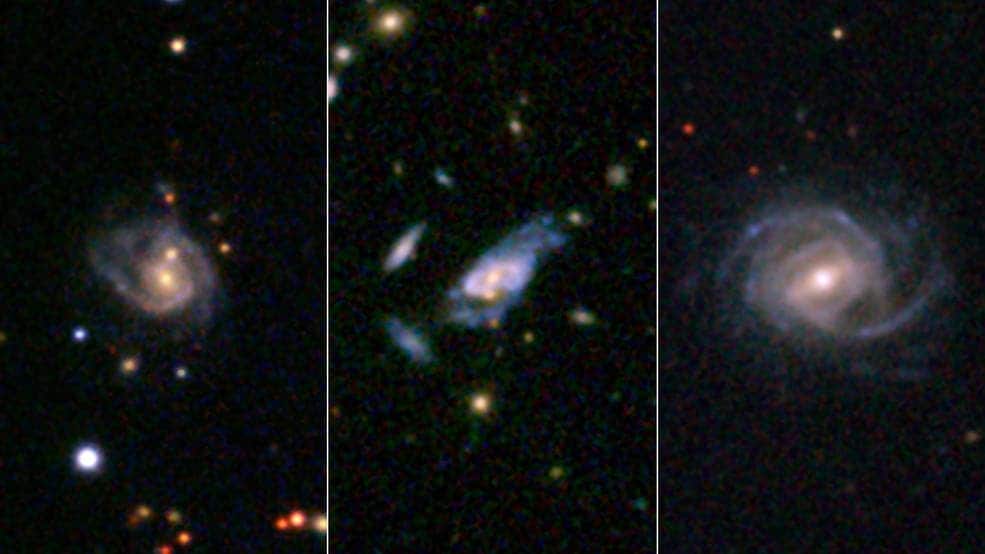Astronomers have discovered a new species of galaxies in the cosmic wilderness. Called “Super Spirals,” these galaxies are quite similar to normal spiral galaxies except they’re much larger (you know, super). In fact, they’re some of the biggest and brightest objects in the galaxy – and they’ve been hiding in plain sight.

Three examples of super spirals are presented here in images taken by the Sloan Digital Sky Survey.
Credits: SDSS
This strange new type of galactic beast were discovered by a team from the Infrared Processing and Analysis Centre (IPAC) at the California Institute of Technology. They are on average 8-14 times brighter than the Milky Way, possess 10 times as much mass, and create 30 times more stars.
“We have found a previously unrecognized class of spiral galaxies that are as luminous and massive as the biggest, brightest galaxies we know of,” said Patrick Ogle, an astrophysicist at the Infrared Processing and Analysis Center (IPAC) at the California Institute of Technology in Pasadena and lead author of a new paper on the findings published in The Astrophysical Journal. “It’s as if we have just discovered a new land animal stomping around that is the size of an elephant but had shockingly gone unnoticed by zoologists.”
He and his colleagues were searching for massive and bright galaxies. Interestingly, their finding came only from analysis of old data within the NASA/IPAC Extragalactic Database (NED), an online repository containing information on over 100 million galaxies.
“Remarkably, the finding of super spiral galaxies came out of purely analyzing the contents of the NASA/IPAC Extragalactic Database, thus reaping the benefits of the careful, systematic merging of data from many sources on the same galaxies,” said George Helou, a study co-author and the executive director of IPAC. “NED is surely holding many more such nuggets of information, and it is up to us scientists to ask the right questions to bring them out.”
They sampled some 800,000 galaxies, under 3.5 billion light-years from Earth, noticing that 53 of the brightest galaxies intriguingly had a spiral, rather than elliptical, shape. Unlike flat spiral galaxies with organization and structure, elliptic galaxies are more 3D and are generally larger. This prompted astronomers to think they were dealing with a new type of galaxy. Aside for the unusual size and brightness, four of these structures also had double nuclei, like an egg with two yolks. This is a telltale sign that we are dealing with two galaxies merged together, and these early mergers could tell us a lot about their early history.
“Super spirals could fundamentally change our understanding of the formation and evolution of the most massive galaxies,” said Ogle. “We have much to learn from these newly identified, galactic leviathans.”
Journal Reference: Superluminous Spiral Galaxies









